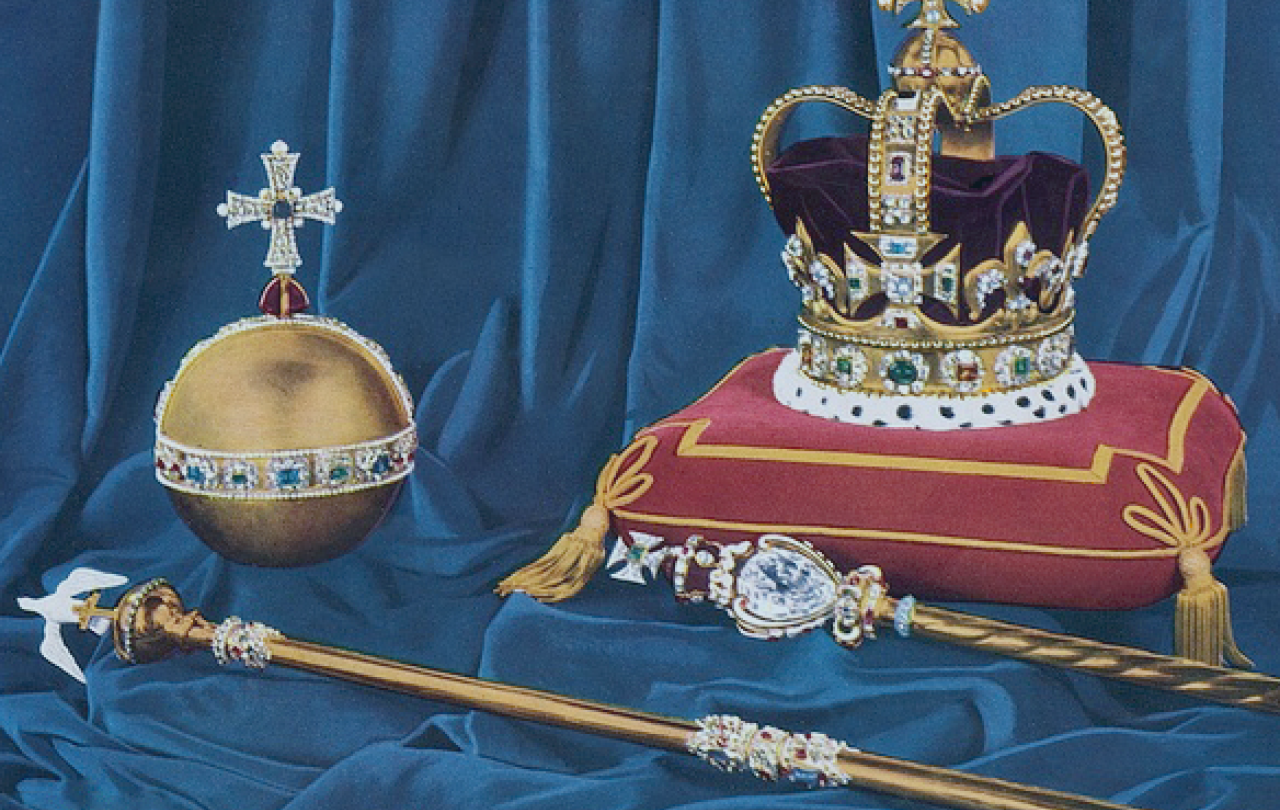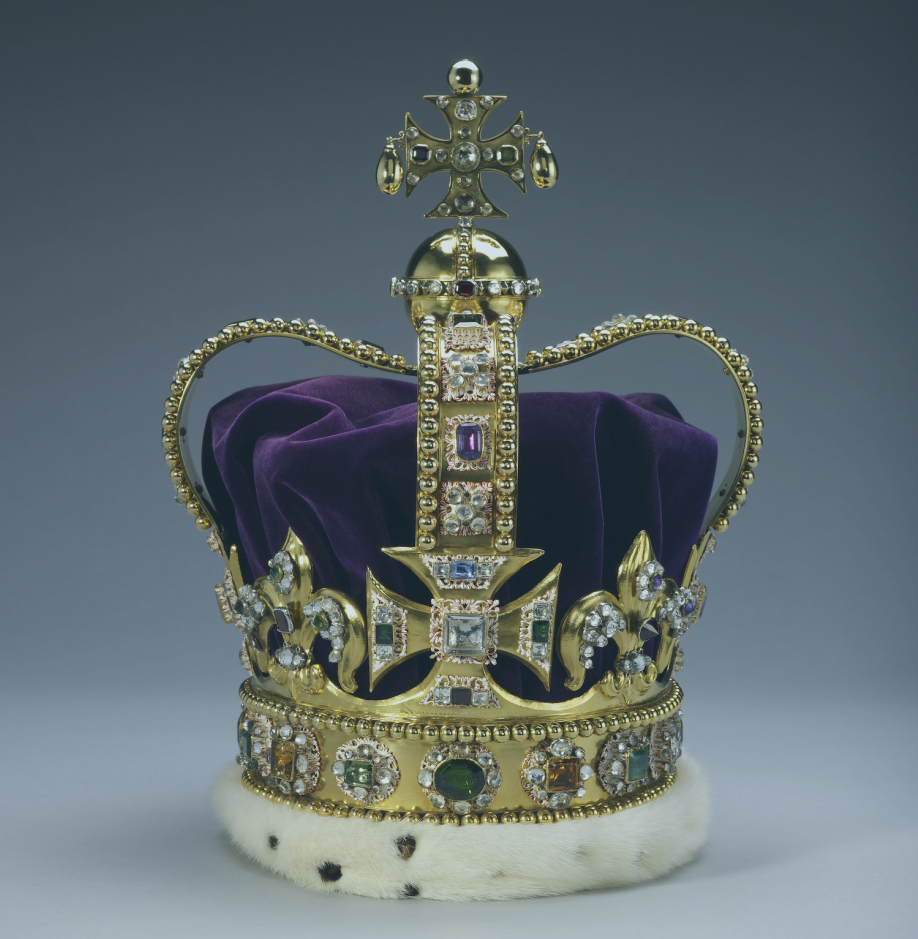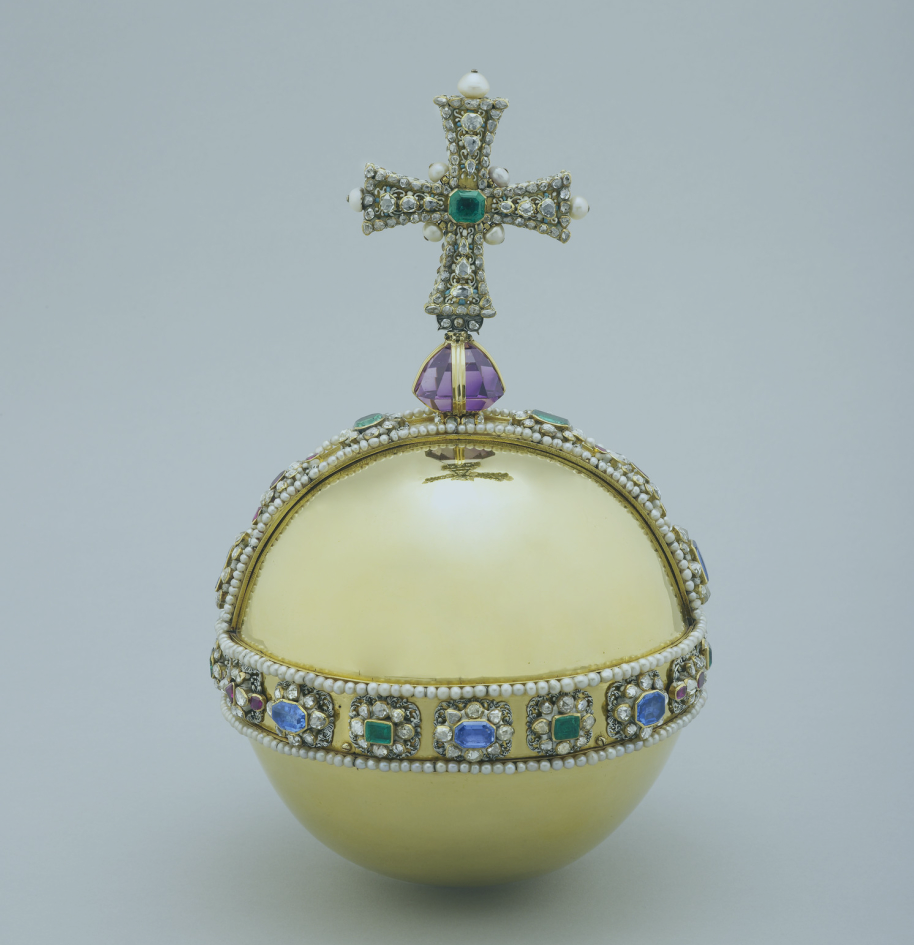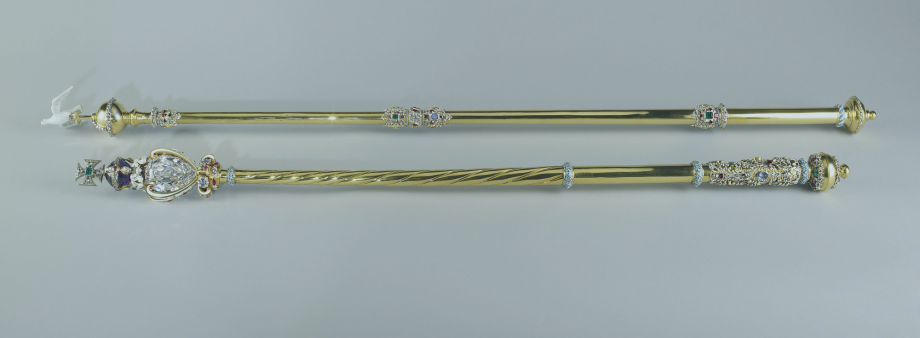The final pieces of regalia with which a monarch is traditionally invested before being crowned are the rod and sceptre, known in Latin as the baculus and the sceptrus. These may originally have derived from the rod and staff mentioned in Psalm 23. The solid gold sceptre has since 1910 contained the largest clear-cut diamond in the world, part of the massive Cullinan diamond found in the Transvaal in 1905. It is surmounted by a cross, which stands for kingly power and justice. The longer rod, also made of solid gold, is surmounted by a dove, signifying equity and mercy.
Working clothes
There is also deep spiritual symbolism in the traditional coronation garments worn by the sovereign. Based on ecclesiastical vestments, they are designed to emphasize the priestly and episcopal character of monarchy and are put on immediately after the anointing which is carried out with the king or queen wearing a simple linen shirt to symbolise humility. The colobium sindonis, a sleeveless garment made of white linen with a lace border is to all intents and purposes a priest’s alb or surplice. Over it is put the supertunica, a close-fitting long coat fashioned in rich cloth of gold, identical to a priest’s dalmatic - a long, wide-sleeved tunic. A girdle of the same material put round the waist has a gold buckle and hangers on which to suspend the sword with which the monarch is girded. A cloth of gold stole is placed over the shoulders. At a later stage the sovereign is traditionally vested in the imperial mantle, or pallium regale, a richly embroidered cope similar to those worn by bishops.
These garments emphasize that, like priests and bishops at their ordinations and consecrations, monarchs are set apart and consecrated to the service of God in their coronations which are first and foremost religious services. This aspect is further emphasized by the framing of the coronation service in the context of a service of Holy Communion according to the order laid down in the Book of Common Prayer.
The unseen
Some will dismiss the ancient regalia with which the monarch is invested, which have also traditionally included golden spurs, bracelets and swords, as anachronistic medieval mumbo jumbo out of keeping with our modern world. Yet they symbolise in powerful visual terms the sacramental nature of our Christian monarchy which points beyond itself to the majesty and mystery of God. In the words of a former Archbishop, Cosmo Gordon Lang, writing just before he presided at the coronation of King George VI, these ancient rites and ceremonies demonstrate ‘that the ultimate source and sanction of all true civil rule and obedience is the Will and Purpose of God, that behind the things that are seen and temporal are the things that are unseen and eternal.’








